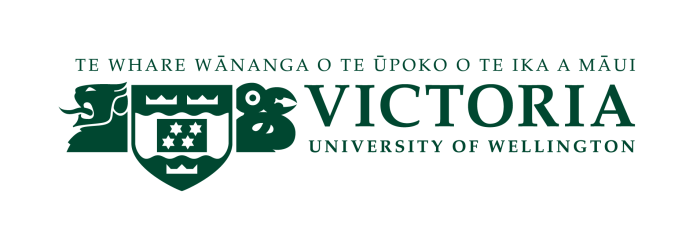 Information and Records Management: A guide to managing University records for
academics
Purpose:
Information and Records Management: A guide to managing University records for
academics
Purpose: The purpose of this guide is to outline your responsibilities for creating and managing University
records. All University staff must manage information and records in accordance with New Zealand law and
University policies – doing so supports processes and procedures and enables the University to be accountable
and transparent in its decision making.
What is a University record? University records document any interaction, transaction or decision relating to
the University administration (e.g. student advising, committee work, research administration, or program,
department, or school administration). Records can be in any format (Word documents, emails, text
messages, databases, social media posts etc.)
Where University records are captured into a system, e.g. HR systems for leave applications or Banner, you do
not need to do anything else. Note that Blackboard is not a record keeping system, and interim assessment
grades need to be managed elsewhere. Where the record is not captured into a system – e.g. a Word
document your School Administrators will be able to provide advice on where these should be stored within
the M: drive.
Any printout from databases – including Banner - are subject to change and the printed copies may not be
accurate. Treat all printouts of student records as confidential.
What is not a University record: University records do not include research and teaching and learning
material that is created by an academic unless it becomes part of the record of the institution1. However
University policies may assign rights to information and records. Individual schools and faculties may have
guidelines about how and where they want you to store teaching and learning material – check with your Head
of School or School Manager about school protocols.
Th
e Assessment Handbook includes information on managing student records e.g. destruction of assessments
and examinations, processes for releasing assessment grades etc.
Official Information Act, the Privacy Act and University records: All University records can be requested
under the Official Information Act (OIA) or the Privacy Act- including email. If a student asks for information
about themselves, we are obliged to release it.
Use of H: or OneDrive for Business: The H: drive (or OneDrive for Business) has been provided for you to use
for personal information. University records must
not be kept on the H: drive or OneDrive for Business.
Email: You must use your University email account to conduct all University business. This includes
interactions with students.
Security and privacy: Any record that contains personal or sensitive information (e.g. student records) are
confidential and must be kept secure and protected from unauthorised access. Contact ITS for information on
how to secure information if you are unsure. To safeguard information:
Password protect all laptops and devices (mobile phones, tablets) that connect to the University
network;
Be careful when working on a shared computer that files containing confidential information are
protected – including downloads;
Lock your computer to prevent unauthorised access when away from your desk;
Store paper records in locked cabinets when not in use.
Social media: If you use a social media platform as part of communicating to a group of students you need to
be comply with the University policies and guidelines.
For further guidance see
: https://intranet.victoria.ac.nz/recordservices/, or contact Information and Records Management at
[email address]
1 Definition of a Public Record (c ii), Public Records Act 2005
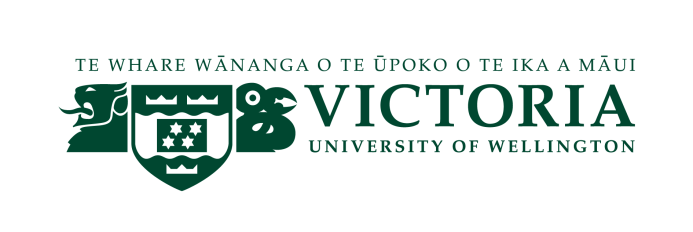 Retention periods for common Faculty records
Retention periods for common Faculty records
For clarification or further information please send any queries to Information and Records Management (IRM)
– [email address]
Note: The record retention period applies to
original records only.
Record Type
GDA
Minimum Retention Period from date of last action
Record
Reference
Destruction
Form
Copies, Duplicates of Records and their
1.2.2
Destroy when no longer administratively required
No
Reproductions
EFTPOS Receipts
4.5.4
Destroy 7 years from date of last action
Yes
Faculty Budget – If summarised
4.3.1
Destroy 7 years from date of last action
Yes
elsewhere
Faculty Board + Committees at Faculty
5.2.1
Archive: Do Not Destroy
N/A
level Agendas, Minutes + Papers
Student Files
14.1.2
Destroy 7 years from date of last action
Yes
Change of Course, Add / Drop Forms
1.2.12
Destroy 2 years from date of last action
No
Student Files – Maintenance of student
14.10.1
Destroy 7 years from date of last action
Yes
record
Student Files – Transcript requests
14.13.2
Destroy when no longer administratively required
No
Grade Reconsideration Applications
10.1.4
Destroy 7 years from date of last action
Yes
Aegrotats
10.6.1
Destroy 7 years from date of last action
Yes
Examination management
10.1.2
Destroy 7 years from date of last action
Yes
Examination papers
N/A
Transfer to Library after exam
N/A
Academic Misconduct – Student breach
14.2.2
Destroy 7 years from date of last action
Yes
investigated, found to be supported
Academic Misconduct – Student breach
14.2.3
Destroy 7 years from date of last action
Yes
investigated, found to be not supported
Staff files
If duplicates, delete, otherwise send to HR Payroll when the staff member leaves.
Record Disposal requirements:
▪
Records that require approval to dispose must be recorded on a Record Destruction Form and the form signed by a certifying
office for approval prior to disposal being carried out.
▪
Staff must not destroy any records older than 25 years old without the approval of the Manager, Information and Records
Management.
▪
Staff must not destroy records identified as Archive. ▪
Staff must store university records in a secure environment that prevents the risk of unauthorised access or damage. ▪
The review or destroy date of records must be easily identifiable. For example, clearly marked on the outside of file sleeves or
storage boxes or recorded on a record location control such as a file list.
▪
For guidance on the retention of records not covered here, refer to the General Disposal Authority
https://intranet.victoria.ac.nz/staff/services-resources/record-management/destroying-and-archiving-records
Last Updated: 4 November 2019
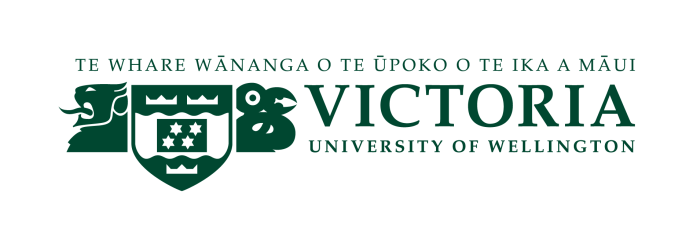 Retention periods for common records created by Schools
Retention periods for common records created by Schools
For clarification or further information please send any queries to Information and Records Management (IRM)
– [email address]
Note: The record retention period applies to
original records only.
Record Type
GDA
Minimum Retention Period from date of last action
Record
Reference
Destruction
Form
Copies, Duplicates of Records and their
1.2.2
Destroy when no longer administratively required
No
Reproductions
Change of Grade Forms
10.1.4
Destroy: 7 years
Yes
Change of Personal Detail Forms
1.2.12
Retain until the production of the completed version
No
or record
Course Outlines
Archive: One copy to Information and Records Management. Applies to Course
Outlines not created via the Course Outline Editor.
Contract for service
7.6.1
Destroy 7 years from date of last action
Yes
CUAP Proposals
10.3.2
Destroy 10 years from date of last action
Yes
EFTPOS Receipts
4.5.4
Destroy: 7 years from date of last action
Yes
Examination management
10.1.2
Destroy 7 years from date of last action
Yes
Examination scripts
Destroy – in accordance with Academic Handbook Guidelines
Student work (assignments etc.)
http://www.victoria.ac.nz/documents/policy/staff-policy/assessment-handbook.pdf
Grade Reconsideration Applications
10.1.4
Destroy 7 years from date of last action
Yes
Grade-Sheets i.e. grading / marking of individual
10.1.3
Destroy 7 years from date of last action
Yes
assessment component
Post graduate student records, Master’s
14.10.1
Destroy 7 years from date of last action
Yes
Progress Reports
School Budget
4.3.1
Destroy: 7 years from date of last action
Yes
School Level Committees Agendas. Minutes +
5.2.1
Archive: Do Not Destroy. Transfer to University
N/A
Papers
Archive when no longer administratively required.
Sub Committees that report to School
5.2.2
Destroy when no longer administratively required
No
Committees e.g. School Research Committee,
Staff-Student Liaison meetings
Staff files
If duplicates, delete, otherwise send to HR Payroll when the staff member leaves.
Staff files – Academic PDCPs
7.15.6
Destroy 7 years from date of last action
Yes
Record Disposal requirements:
▪
Records that require approval to dispose must be recorded on a Record Destruction Form and the form signed by a certifying
office for approval prior to disposal being carried out.
▪
Staff must not destroy any records older than 25 years old without the approval of the Manager, Information and Records
Management.
▪
Staff must not destroy records identified as Archive. ▪
Staff must store university records in a secure environment that prevents the risk of unauthorised access or damage. ▪
The review or destroy date of records must be easily identifiable. For example, clearly marked on the outside of file sleeves or
storage boxes or recorded on a record location control such as a file list.
▪
For guidance on the retention of records not covered here, refer to the General Disposal Authority
https://intranet.victoria.ac.nz/staff/services-resources/record-management/destroying-and-archiving-records
Last Updated: 4 November 2019
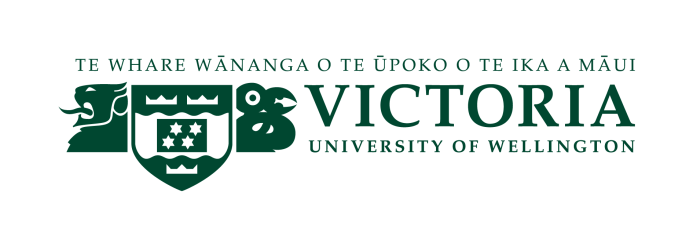 Human Resources / Information and Records Management
Managers Guide to Staff Records
Purpose:
Human Resources / Information and Records Management
Managers Guide to Staff Records
Purpose:
The purpose of this guide is to outline managers’ responsibilities for the management and maintenance of staff
records. This guidance applies to electronic and paper staff records.
General information:
The retention and disposal of staff records is mandated by Victoria’s obligations under the Public Records Act
2005 and also governed by the Privacy Act 1993. Please note that:
▪ All records (including duplicates) that contain personal information
must be held in a secure Victoria
environment or ITS approved system – i.e. they must not be held in an unauthorised cloud service
provider (e.g. Dropbox, Google Docs).
▪ Duplicates kept for administrative purposes must be destroyed when no longer required.
▪ Any paper staff record (original or duplicate) being destroyed must be destroyed confidentially
through either shredding or use of a locked bin.
▪ If an original document may be relevant to any legal proceedings involving the staff member to which
the document relates please seek advice from your Human Resources contact before taking any
action.
▪ Retention periods only apply to original documents and are set out in the New Zealand Universities
General Disposal Authority1 (GDA).
▪ Before destroying original records (either paper or electronic) a Record Destruction form2 must be
completed and signed by the person authorised to approve their destruction for your Unit (refer to
the Delegations Authority).
Scanning files to Payroll
Please scan files to HR Payroll for inclusion on a staff file. You must follow the following process as soon as an
original document has come into existence (e.g. when a signed employment agreement is returned to you):
▪ Scan and email each document separately (i.e. do not scan 6 employment agreements as one pdf and
email to Payroll)
▪ Put the name of the staff member in the email subject line followed by the type of document e.g.
“Smith, John, Employment agreement”.
▪ Check that the scan of the document is a complete copy of the original before emailing it to HR Payroll
– it must be complete (a common issue is where only every other page of a double-sided original is
scanned), legible and straight.
▪ If you have emailed a document to HR Payroll do not send the hard copy document as well.
Hold onto the hard copy document for a minimum of 2 weeks, but no longer than 4 weeks in case there is a
problem with the scanned file. After that minimum period has passed, if you have not received any advice
from Human Resources to the contrary, you should destroy the hard copy document.
Staff files:
The master copy of staff files, including letters of offer and employment agreements of fixed term, casual or
permanent staff, are held by Human Resources.
The master staff file for an employee is comprised of the signed letter of offer and employment agreement
(and any associated documentation e.g. role description), and records relating to salary changes, outcomes
1 To access the NZ Universities General Disposal Authority
: https://www.victoria.ac.nz/staff/services-resources/record-
management/documents/general-disposal-authority.pdf
2 For a copy of the Disposal form
: https://www.victoria.ac.nz/staff/services-resources/record-services/destroying-and-archiving-records
communicated to the employee from processes relating to misconduct, grievances, or other complaints (for as
long as those outcomes remain “live” – e.g. a written warning), letters of recognition etc. For professional staff
performance development and career plans (PDCPs) are also held on the staff file – but the PDCPs of academic
staff are not (see below).
All documentation on a staff member must be sent (electronically) to HR Payroll. When a staff member leaves
securely destroy all copies of documentation you hold. If the document has not been sent to HR Payroll scan
and email it within 6 weeks of the staff member leaving.
In general, staff files are destroyed 7 years after the individual leaves Victoria. Staff files for staff who are
members of the Senior Leadership Team or have received significant honours, achieved high distinction (e.g.
Order of NZ, Order of Merit, Honorary Doctorates, academic medals, literary prizes etc.) while employed at
Victoria are retained permanently.
Academic Staff PDCP’s
PDCP records of academic staff must be retained in the school or faculty where the person was employed and
destroyed 7 years after the staff member has left Victoria (GDA reference 7.14.1)3.
Interested parties (adjuncts, visiting scholars)
The records of Adjuncts and Visiting Scholars must be kept in accordance with the Human Resources policy4 –
i.e. these records are kept by the HR Faculty Manager.
Recruitment and Interview notes:
For information about documentation that must be provided to Human Resources after the offer of
employment has been accepted refer t
o https://www.victoria.ac.nz/staff/human-resources/recruitment/make-
offer/information.
During the selection process notes will generally be made about candidates – including those made by the
interview panel. The recruiting manager should collect all the notes made by members of the interview panel
destroy them after 3 months5. You do not need to complete a Records Destruction form for these records.
Pre-employment checks:
In most cases, new staff undergo a Ministry of Justice criminal check. Where a staff member meets the
definition of a Children’s Worker under the Vulnerable Children Act 2014, a New Zealand Police vet must be
undertaken. (Further advice about this can be sought from your HR contact.)
Ministry of Justice checks must be sent to Human Resources for filing on the staff file (an electronic copy,
following the process above, is accepted).
NZ Police vets must be destroyed 7 years after they were requested. Police vets must be stored securely (in a
folder restricted to the police vet agent(s) if on a shared drive or in a locked, secure room if paper). They must
not be sent to HR Payroll for filing.
Contractor’s records:
The records relating to contractors are not maintained by Human Resources, they are to be retained, managed
and destroyed by the school / faculty / CSU the person was contracted to. The file should contain the signed
contract for services (and any associated documentation e.g. description of services/activities), and any other
documentation relating to the contract (e.g. extensions or variations).
Finally –
all information (including emails) created at VUW is potentially disclosable to others under the
Privacy Act and the Official Information Act – it is good practice to destroy personal information in
accordance with the minimum retention periods set out in the General Disposal Authority.
For records management guidance see: https://intranet.victoria.ac.nz/services-resources/record-management, or contact Information and
Records Management a
t [email address]
3 Faculty Human Resource advisors may also hold copies of academics PDCP’s for administrative purposes.
4 https://intranet.victoria.ac.nz/staff/human-resources/agreements/temporary-appointments-unpaid/adjunct-and-visiting-staff-policy.pdf
5 Se
e https://www.victoria.ac.nz/staff/human-resources/recruitment/make-offer/information
Internal Use Only
Last Updated: 2019-11-04
 Managing Email
Managing Email
Many people struggle to manage the sheer quantity of email sent and received. Below are some of
the tips Record Services have collected – if there are others you would like to suggest, please contact
us.
Sending email:
Before sending an email consider:
Do you need to send it?
Would it be quicker to phone or have a face-to-face conversation? It may be useful to follow
these conservations with a summary email.
When sending an email use the fol owing email conventions:
To:
Use To: when you need a response.
Cc:
Cc: is “For information only” - use when you are not expecting a response.
You don’t need a name in the To: field to send a Cc: email.
Bcc:
Use Bcc: (blind carbon copy) when sending out a bulk emails to protect the privacy of
recipients. Each recipient cannot see other recipients email address.
Reply Al
Limit the use of reply all – does everyone need to read your response?
Delay
Delaying sending emails means that if you forget the attachment, add the wrong address
Send
etc., there is a window of opportunity to open the email and make a change as required.
In Outlook select File, Rules – Manage Rules and Alerts, and create a new rule that
applies to “Messages I send” - 1 or 2 minutes should be enough.
Drafts
Write drafts and review them after a period of time – to avoid sending by accident
remove the email address. This is particularly useful when responding to an email that
has annoyed or upset you.
Font
Fonts with extraordinarily thin strokes or unusual features and characteristics that reduce
the familiarity of their letter forms are harder to read, especial y for users who may have
impairments. The closest fonts to the Victoria’s official fonts are Georgia and Arial.
Managing incoming email (or controlling inbox madness)
Try to sort your inbox on a daily basis.
Deal with each email once – either by replying to it, deleting it, or turn it into a task.
Delete unnecessary messages (without reading them!)
Read from
Read emails received from newest to oldest – this means you do not spend time on a
newest to
query has been answered by someone else, or the issue has resolved itself.
oldest
This is particularly useful if you have been on holiday / travelling and not checking
email for a number of days.
Rules
Use rules to automatical y move emails out of the inbox (into different folders) – and
then read them when you have time. For example:
email you are cc’d into a “For information Only” folder.
email from List-Servs, blogs, groups you belong to etc. into their own folders.
Subject
Make the subject line meaningful to others, and change it if the subject evolves.
lines
Use the subject line for the message e.g. ‘Can you send me the latest report on
student success” - this way the recipient does not need to open the email to see what
you want. For clarity some use EOM (end of message) at the end.
Use the subject line to convey what you need the recipient to do – e.g. FYI xxx or
Action required: xxx).
Diary
If your job al ows, diary a regular time to read emails – if appropriate include this
information in your email signature e.g. “I check email at 10.00 and 3.00 daily – if you
need an urgent reply please ring me on extension xxx. I read emails I am cc’d into on
Friday.”
Content
To create less confusion – and stop issues being overlooked limit emails to one topic,
or number the topics for clarity.
Email
Change the default email settings and views to suit.
settings
Notifications You can remove / alter email notifications and other settings so that you are not
distracted by new emails being received.
In Outlook select File - Options - Mail.
Under Message Arrival you can select – or deselect – the options to be notified of
new emails arriving.
View
Change the default view to Calendar or Tasks.
In Outlook Select File - Options - Mail - Advanced to change the default view.
Holidays
There is little more demoralising that returning from holiday to an overflowing Inbox. Before you leave
consider creating a rule that moves all received emails into a separate folder. When you return you
will only have new emails in your inbox to deal with.
Include in your out of office message when you expect to have cleared email by, and suggest that if
the email is urgent that it be resent when you return, or forwarded to a co-worker during your
absence.
Records Management and Email
Some emails are official record as evidence of decision making.
If appropriate save emails into your M:\ drive to enable others in your team to identify information
around decisions made. This applies to emails both received and sent.
Phishing emails
Periodical y the University is hit by spam emails. If in doubt about the validity of an email check with
the ITS Help Desk before opening it. Note that ITS will
never send an email containing a link and ask
you to verify your details. If you think you have been spammed contact the ITS Help Desk
immediately
Final y –
all email sent and received from your VUW email account is discoverable under the Privacy
Act and the Official Information Act – keep the tone polite and courteous (some suggest that if you
would not say it to a person’s face, or write it in a letter, don’t say it in an email).
For records management guidance see:
https://intranet.victoria.ac.nz/recordservices/, or contact Record
Services at
[email address]
Public Use
Last Updated: 2015-09-09
m:\records services\communications and marketing\guides\tips and hints for managing email.docx
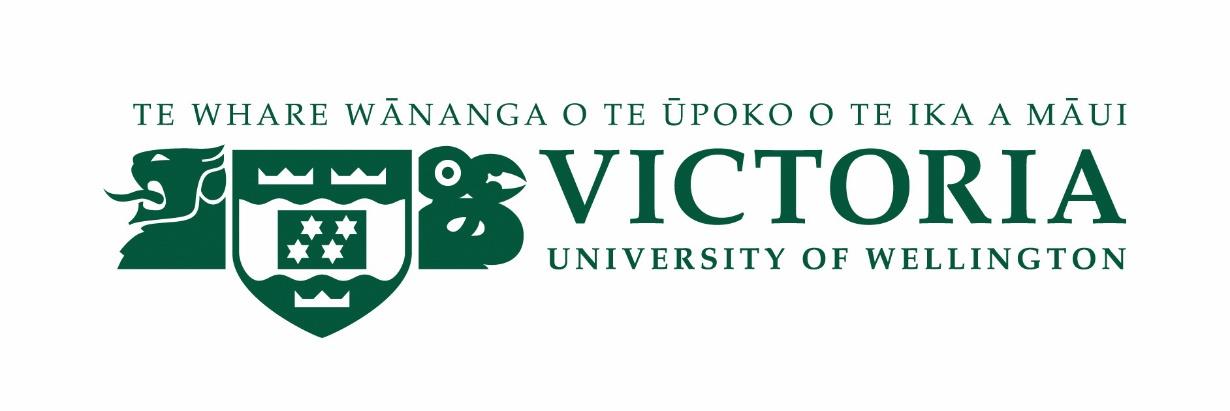
Guidance on the storage of electronic information
Information Technology Services (ITS) / Information and Records Management (IRM)
There has been a proliferation of places to store information and records - the following guidelines
are for the storage of University information and records.
All University information and records MUST be stored on ITS-provided systems and hardware. This
includes cloud services. If the cloud service is not provided by ITS you must not store university
information and records in it.
University information and records are defined as information created, regardless of format that
informs the management and operation of the University and its subsidiaries. In practice this means
all information created as a part of day to day activities of all professional staff. The information and
records of academic staff that relate to the development of teaching and learning material and
research are not considered to be University information and records. However academics may
wish to take these guidelines into consideration to ensure that their research and teaching and
learning materials are suitably and appropriately protected.
The following will help you keep university information in the right place, so that it is accessible,
usable and reusable. If you have any questions or are in doubt please contact the ITS Help Desk
(x5050) or the Manager, Information and Records Management. (x5985)
Your M:\ network drive or SharePoint
For professional staff all information created when carrying out their job is university information
and must be saved in the M:\ drive or in their units SharePoint site. If staff are concerned that draft
documents could be used inappropriately they should be using the appropriate naming conventions
or structuring the M:\ drive in such a way that drafts are clearly identified.
For academics, all work related information created and modified in your day to day activities in the
conduct of the functions of the university e.g. Students interim marks (from individual assignments).
H:\ drive or OneDrive
The H:\ drive is provided by the University for the storage of personal information. In general it
should not be used for University information.
There are occasions where managers may wish to save information into the H:\ drive as they do not
want others to see it. Saving to the H:\ drive should only be used when the information is
confidential (e.g. units change proposal) or human resource records that either the manager has not
transferred to HR or are duplicates retained for business reasons. All university records should be
transferred to the M:\ drive as soon as is reasonably practicable.
Examples of what to store in the M:\ (SharePoint) or H:\ (OneDrive) drive:
H:\ (OneDrive)
M:\ (SharePoint)
Professional staff
PDCP
All work related information
Staff members PDCP’s
HR material that is a duplicate (e.g.
contracts of staff members)
Personal information (e.g. CV)
Academic staff
As for professional staff
Students interim marks (from
individual assignments)
Research data / outputs
C:\, D:\ and Desktop
Do not save documents to your C:\, D:\ drive or your desktop – they are not backed up, and in the
event of a failure of your PC ITS cannot retrieve them for you. Documents saved to your desktop are
not available remotely either.
Office 365 Groups:
Office 365 Groups are a way of facilitating cross-university collaboration and / or collaboration with
external parties. A ‘group’ consists of a number of collaboration tools, including a calendar, file
storage (for word, excel documents etc.), and a Notebook.
The advantages of Office 365 Groups include that the group admin can control who is a member of
the group, including external parties, and that it is easily accessible 24/7 via the web.
All members of an Office 365 Group can see all the information created in the group - i.e. access
cannot be restricted from any member. (However only members can see and find a group.)
To request an Office 365 Group contact ITS Help Desk (x5050).
Reminder: Exit Interviews:
The exit interview guidelines include a requirement that staff move university information out of
their H:\ drive and email accounts into the M:\ drive, or where personal information either to
another persons H:\ drive or a secured M:\ drive folder before leaving the University.
The following flow chart may help you when deciding where to store information:
Are you going to create university information?
Yes
No
Do you need to col aborate across the University
Is this information
on the creation of this information>
personal to you?
Yes
No
No
Yes
You could use either
Use either
Is this information your
Save it in H:\ or
Office 365 Group
M:\ Drive or
research?
OneDrive
SharePoint
SharePoint
M:\
NOTE: If your dataset is large then talk to ITS about using SOLAR
Yes
(collaboration tools are on their way )
Do you need to
collaborate with others?
Yes
No
You could use either
Save it in H:\ or
Office 365 Groups
OneDrive
OneDrive
SharePoint
Document Outline





